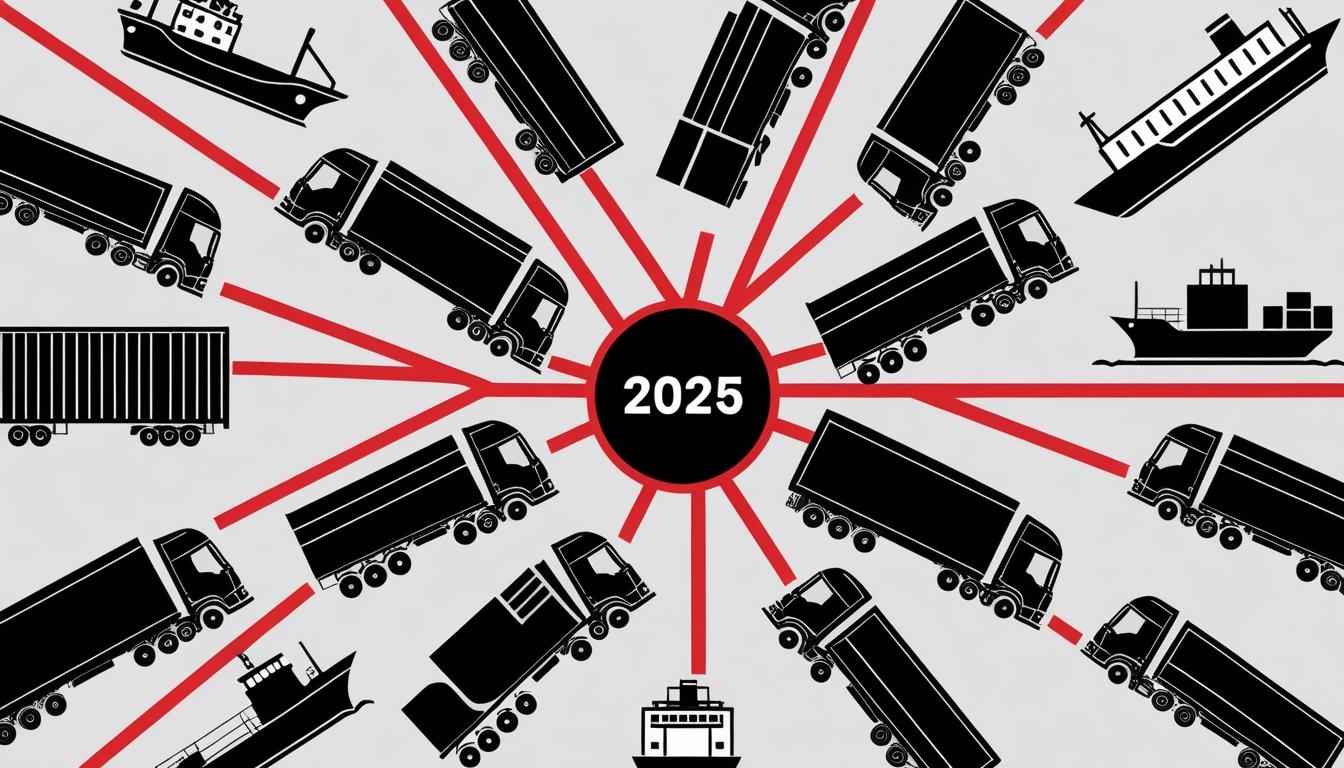The transportation and logistics sector is navigating a complex landscape as it approaches the year 2025, characterised by a confluence of economic shifts, regulatory changes, and the integration of emerging technologies. Observers note that 2024 proved to be a mixed year for the industry, with a sluggish truckload market, rising maritime rates driven by geopolitical events, and fluctuating fuel prices. The backdrop includes rising tariffs causing shippers to stockpile inventory, further complicating the operational landscape.
To glean insights for the upcoming year, "Supply Chain Xchange" consulted three industry experts: Sal Campos, managed transportation operations leader at Ruan; Allan Miner, CEO of CT Logistics; and Julie Van de Kamp, chief customer officer at Sonar. These experts shared their predictions regarding the trends that are likely to shape the transportation and logistics sectors in 2025.
Sal Campos highlighted that for the past two years, the industry has been anticipating a rise in freight rates that has yet to materialise. "Capacity in the industry has remained resilient in the face of these low rates," Campos stated. He expressed a cautious optimism, asserting that while rates may have hit rock bottom, any subsequent recovery is likely to happen gradually.
Julie Van de Kamp observed that underlying market conditions show a robust demand, despite the suppressing freight rates largely stemming from capacity constraints. Data from Sonar indicated a breach of the 6% tender rejection rate in trucking, suggesting an impending shift that may lead to increased rates as shippers reevaluate their strategies.
Miner noted an expected uptick in shipping, attributing this to lower interest rates which could potentially rejuvenate the freight market. He commented on the positive consumer and corporate sentiment, further driving shipping activities.
In terms of the impact of government policies under the new administration, Van de Kamp expressed confidence that the current administration's approach may enhance the prospects for transportation companies in North America. She pointed out the implications of anticipated tariff increases on products from China, which are likely to induce aggressive inventory builds among shippers, thereby elevating demand for transportation services.
Sal Campos elaborated on the implications of the proposed tariffs, predicting significant changes to trade and logistics activity. He mentioned commitments to impose tariffs between 10% and 20% on imports, and a staggering 60% on goods from China. While underscoring potential increases in U.S. manufacturing output, Campos noted the broader implications for the transportation sector.
A keen area of discussion amongst the experts was the impact of investments in infrastructure. Van de Kamp remarked that while government funding for infrastructure improvements has targeted urban transit projects, it has not significantly influenced overall transportation networks. However, specific projects, such as new cranes in various ports, could enhance throughput capabilities.
The panel also considered the current overcapacity issues plaguing the market. Campos observed a cautious optimism among large carriers regarding the eventual market rebound expected in late 2025. He explained the tight control over assets by carriers, indicating a strategy to capitalise on an eventual recovery. In contrast, Miner cautioned that macroeconomic factors would continue to challenge overcapacity levels in certain shipping lanes.
As interest rates decline, Van de Kamp suggested this could stimulate borrowing and investment within transportation-related projects, asserting that lower borrowing costs should encourage carriers to replenish fleets. Nonetheless, Campos expressed scepticism, stating that the necessity to renew rolling stock means companies will continue to invest regardless of fluctuating interest rates.
The integration of artificial intelligence (AI) in operations was another focal point. Miner indicated that AI is being employed in simple, repetitive tasks while Campos noted the use of robotic process automation (RPA) for workflow efficiency, particularly in financial planning and risk compliance analyses.
Looking ahead to fuel prices, Campos reiterated the unpredictability of diesel costs, suggesting that trucking companies tend to hedge against these fluctuations rather than attempt to forecast them accurately. Van de Kamp anticipated a slight decline in fuel prices due to OPEC's continued production cuts, while Miner endorsed the positive outlook for fuel cost reductions alongside renewed domestic oil production initiatives.
Lastly, the issue of electric-powered vehicles was discussed. Campos remarked on the limited adoption of electric trucks, particularly in specific applications, while Van de Kamp expressed optimism for their future use, particularly in local delivery scenarios hindering the transition in long-haul trucking operations.
To optimise operations, Van de Kamp advised shippers to enhance efficiency in their processes and maintain open communication with carriers, suggesting that well-aligned partnerships yield the best outcomes. Miner echoed this sentiment, emphasising the need for standardised shipping practices and timely notification of delivery schedules.
As the industry anticipates the forthcoming year, the insights from these experts reveal a sector in a state of transformation, with implications for economic activity, policy shifts, and the evolving role of technology in shaping logistics and transportation practices.
Source: Noah Wire Services
